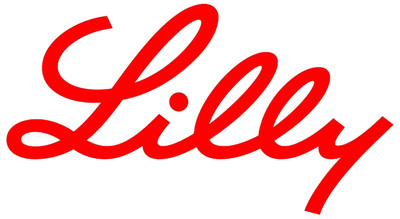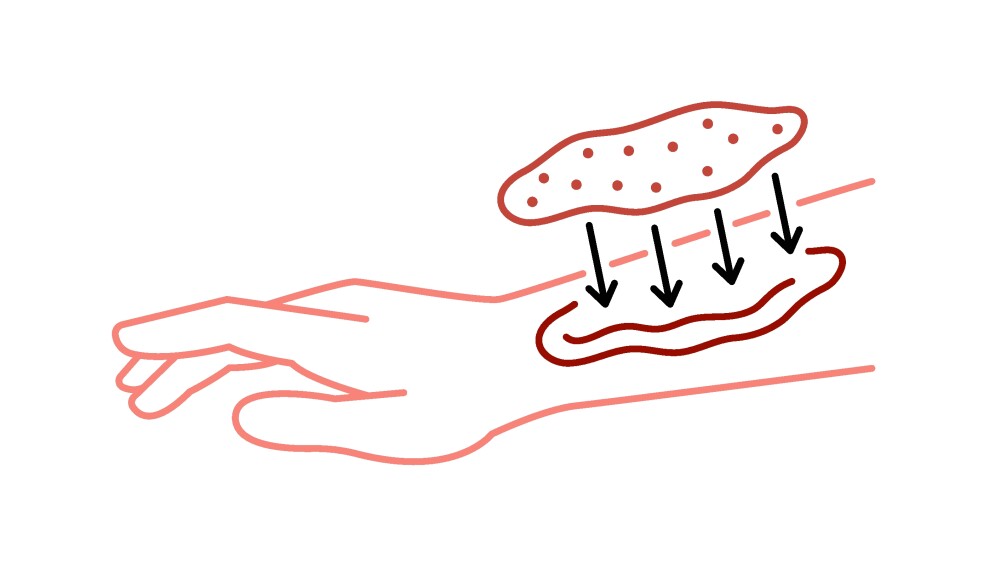- In pivotal studies, most patients treated with Taltz achieved significant skin clearance (PASI 75, sPGA 0 or 1) with many achieving virtually clear (PASI 90) or completely clear (PASI 100, sPGA 0) skin at week 12 -
INDIANAPOLIS, March 22, 2016 /PRNewswire/ -- Eli Lilly and Company (NYSE: LLY) announced today that the U.S. Food and Drug Administration (FDA) has approved Taltz® (ixekizumab) injection 80 mg/mL for the treatment of moderate-to-severe plaque psoriasis in adult patients who are candidates for systemic therapy or phototherapy. Taltz should not be used in patients with a previous hypersensitivity reaction, such as anaphylaxis, to ixekizumab or to any of the excipients. Taltz is designed to specifically target IL-17A, a protein that plays a role in driving underlying inflammation in psoriasis.1
Psoriasis is a chronic, immune disease that affects the skin.2 Psoriasis affects approximately 7.5 million Americans, approximately 20 percent of whom have moderate-to-severe plaque psoriasis.3 Plaque psoriasis is the most common form of the condition and appears as raised, red patches of skin covered with a silvery, white buildup of dead skin cells, which are often painful or itchy.3,4 The exact cause of psoriasis is unknown, though genetics and environmental factors are known to play a role in the development of the disease.3
"Many people living with psoriasis are still looking for a treatment that will successfully manage the magnitude of this disease," said Alex Azar, president, Lilly USA, LLC. "With the approval of Taltz, we are proud to provide patients with a new treatment that may help patients experience virtually or completely clear skin."
The FDA approval of Taltz was based on findings from the largest Phase 3 trial program approved to datemore than 3,800 patients with moderate-to-severe plaque psoriasis from 21 countries.5 This number includes patients who began the trial on Taltz or placebo, or active comparator (U.S.-approved etanercept).6 This clinical program included three double-blind, multicenter, Phase 3 studiesUNCOVER-1, UNCOVER-2 and UNCOVER-3which demonstrated the safety and efficacy of Taltz in patients with moderate-to-severe plaque psoriasis. All three studies evaluated the safety and efficacy of Taltz (80 mg every two weeks, following a 160-mg starting dose) compared to placebo after 12 weeks. UNCOVER-2 and UNCOVER-3 included an additional comparator arm in which patients received U.S.-approved etanercept (50 mg twice a week) for 12 weeks. UNCOVER-1 and UNCOVER-2 also evaluated response rates with Taltz during the maintenance period through 60 weeks.
In these studies, the co-primary efficacy endpoints at 12 weeks were a 75 percent improvement in the composite Psoriasis Area Severity Index (PASI) score and static Physician's Global Assessment (sPGA) 0 or 1 and at least a 2-point improvement from baseline. PASI measures the extent and severity of psoriasis by assessing average redness, thickness and scaliness of skin lesions (each graded on a zero to four scale), weighted by the body surface area of involved skin, while the sPGA is the physician's assessment of severity of a patient's psoriasis lesions overall at a specific point in time and is a required measure the FDA uses to evaluate effectiveness.6
In all three studies, at 12 weeks, 87 to 90 percent of patients treated with Taltz saw a significant improvement of their psoriasis plaques (PASI 75). In addition, 81 to 83 percent of patients treated with Taltz achieved sPGA 0 or 1. The majority of patients treated with Taltz, 68 to 71 percent, achieved virtually clear skin (PASI 90) and 35 to 42 percent of patients saw complete resolution of their psoriasis plaques (PASI 100, sPGA 0). Among those patients treated with placebo, 7 percent or fewer achieved PASI 75, 7 percent or fewer achieved sPGA 0 or 1, 3 percent or fewer achieved PASI 90 and 1 percent or fewer achieved PASI 100 and sPGA 0.
In UNCOVER-1 and UNCOVER-2, of patients who responded to Taltz (sPGA 0 or 1 and at least a 2-point improvement from baseline) at 12 weeks, 75 percent consistently maintained that response at the 60-week endpoint.
Taltz was also statistically superior to U.S.-approved etanercept at all skin clearance levels, including PASI 75 and sPGA 0 or 1 at 12 weeks. In an integrated analysis of the U.S. sites in the two active comparator studiesUNCOVER-2 and UNCOVER-3the respective response rates for Taltz vs. U.S.-approved etanercept were 87 percent vs. 41 percent for PASI 75 and 73 percent vs. 27 percent for sPGA 0 or 1.
Information regarding the safety of Taltz is drawn from a database of 4,204 patients with moderate-to-severe plaque psoriasis who volunteered in both controlled and uncontrolled clinical trials.
Taltz may increase the risk of infection. Patients treated with Taltz had a higher rate of infections than patients treated with placebo (27 percent vs. 23 percent). Upper respiratory tract infections, oral candidiasis, conjunctivitis and tinea infections occurred more frequently in patients treated with Taltz compared to placebo. Serious infections have occurred. Instruct patients to seek medical advice if signs or symptoms of clinically important chronic or acute infection occur. If a serious infection develops, discontinue Taltz until the infection resolves.
Other warnings and precautions for Taltz include pre-treatment evaluation for tuberculosis, hypersensitivity reactions, inflammatory bowel disease and immunizations. See Important Safety Information below.
In UNCOVER-2 and UNCOVER-3, the rate of serious adverse events during the controlled induction period (weeks 0-12) was 0.7 percent for U.S.-approved etanercept and 2 percent for Taltz, and the rate of discontinuation from adverse events was 0.7 percent for U.S.-approved etanercept and 2 percent for Taltz. The incidence of infections was 18 percent for U.S.-approved etanercept and 26 percent for Taltz. The rate of serious infections was 0.3 percent for both U.S.-approved etanercept and Taltz.
"Complete clearance of skin plaques is an important treatment goal for psoriasis," said Craig Leonardi, M.D., lead study author and clinical professor of dermatology at St. Louis University School of Medicine. "With Taltz, physicians now have a choice that can help patients achieve virtually clear or completely clear skin; in fact, four out of 10 achieved completely clear skin. With these study results, physicians can reassure patients that consistent results can be maintained with Taltz."
Taltz will be available in the U.S. beginning in the second quarter of 2016. Lilly will work with insurers, health systems and providers to ensure patients are able to access this treatment. Patients, physicians, pharmacists or other healthcare professionals with questions about Taltz should contact The Lilly Answers Center at 1-800-LillyRx (1-800-545-5979) or visit www.lilly.com.
Indications and Usage
Taltz® is indicated for the treatment of adults with moderate-to-severe plaque psoriasis who are candidates for systemic therapy or phototherapy.
IMPORTANT SAFETY INFORMATION
CONTRAINDICATIONS
Taltz is contraindicated in patients with a previous serious hypersensitivity reaction, such as anaphylaxis, to ixekizumab or to any of the excipients.
WARNINGS AND PRECAUTIONS
Infections
Taltz may increase the risk of infection. The Taltz group had a higher rate of infections than the placebo group (27% vs. 23%). Serious infections have occurred. Instruct patients to seek medical advice if signs or symptoms of clinically important chronic or acute infection occur. If a serious infection develops, discontinue Taltz until the infection resolves.
Pre-Treatment Evaluation for Tuberculosis
Evaluate patients for tuberculosis (TB) infection prior to initiating treatment with Taltz. Do not administer to patients with active TB infection. Initiate treatment of latent TB prior to administering Taltz. Patients receiving Taltz should be monitored closely for signs and symptoms of active TB during and after treatment.
Hypersensitivity
Serious hypersensitivity reactions, including angioedema and urticaria (each < 0.1%), occurred in the Taltz group in clinical trials. If a serious hypersensitivity reaction occurs, discontinue Taltz immediately and initiate appropriate therapy.
Inflammatory Bowel Disease
Crohn's disease and ulcerative colitis, including exacerbations, occurred at a greater frequency in the Taltz group (Crohn's disease 0.1%, ulcerative colitis 0.2%) than in the placebo group (0%) during clinical trials. During Taltz treatment, monitor patients for onset or exacerbations of inflammatory bowel disease.
Immunizations
Prior to initiating therapy with Taltz, consider completion of all age appropriate immunizations according to current immunization guidelines. Live vaccines should not be given with Taltz.
ADVERSE REACTIONS
Most common adverse reactions (>1%) associated with Taltz treatment are injection site reactions, upper respiratory tract infections, nausea, and tinea infections.
See accompanying Prescribing Information and Medication Guide. See Instructions for Use included with the device.
IX HCP ISI 22MAR2016
About Taltz®
Taltz® (ixekizumab) is a humanized IgG4 monoclonal antibody that selectively binds with interleukin 17A (IL-17A) cytokine and inhibits its interaction with the IL-17 receptor. IL-17A is a naturally occurring cytokine that is involved in normal inflammatory and immune responses. Taltz inhibits the release of pro-inflammatory cytokines and chemokines.
About the UNCOVER Studies
The UNCOVER-1, UNCOVER-2 and UNCOVER-3 studies are double-blind, multicenter, Phase 3 studies evaluating more than 3,800 patients with moderate-to-severe plaque psoriasis from 21 countries. All three studies evaluated the safety and efficacy of different dosing regimens of Taltz (80 mg every two or four weeks, following a 160-mg starting dose) compared to placebo after 12 weeks. UNCOVER-2 and UNCOVER-3 included an additional comparator arm in which patients received U.S.-approved etanercept (50 mg twice a week) for 12 weeks. In UNCOVER-1 and UNCOVER-2, safety and efficacy of Taltz was further evaluated through 60 weeks.
About Moderate-to-Severe Plaque Psoriasis
Psoriasis is a chronic, immune disease that affects the skin.3 It occurs when the immune system sends out faulty signals that speed up the growth cycle of skin cells.3 It is the most common inflammatory disease in the United States, affecting as many as 7.5 million Americans and an estimated 125 million people worldwide.3 The most common form of psoriasis, plaque psoriasis, appears as raised, red patches covered with a silvery white buildup of dead skin cells.3 Approximately 20 percent of people with psoriasis have moderate-to-severe plaque psoriasis.4
About Eli Lilly and Company
Lilly is a global healthcare leader that unites caring with discovery to make life better for people around the world. We were founded more than a century ago by a man committed to creating high-quality medicines that meet real needs, and today we remain true to that mission in all our work. Across the globe, Lilly employees work to discover and bring life-changing medicines to those who need them, improve the understanding and management of disease, and give back to communities through philanthropy and volunteerism. To learn more about Lilly, please visit us at www.lilly.com and newsroom.lilly.com/social-channels.
P-LLY
This press release contains forward-looking statements (as that term is defined in the Private Securities Litigation Reform Act of 1995) about Taltz (ixekizumab) as a treatment for moderate-to-severe plaque psoriasis, and reflects Lilly's current belief. However, as with any pharmaceutical product, there are substantial risks and uncertainties in the process of development and commercialization. Among other things, there can be no guarantee that ixekizumab will receive additional regulatory approvals or be commercially successful. For further discussion of these and other risks and uncertainties, see Lilly's most recent Form 10-K and Form 10-Q filings with the United States Securities and Exchange Commission. Except as required by law, Lilly undertakes no duty to update forward-looking statements to reflect events after the date of this release.
1 Krueger JG, Fretzin S, Suárez-Fariñas M, et al. IL-17A is essential for cell activation and inflammatory gene circuits in subjects with psoriasis. J Allergy Clin Immunol. 2012;130(1):145-54.
2 Psoriasis media kit. National Psoriasis Foundation website. https://www.psoriasis.org/sites/default/files/for-media/MediaKit.pdf. Accessed March 22, 2016.
3 Psoriasis. American Academy of Dermatology website. https://www.aad.org/media-resources/stats-and-facts/conditions/psoriasis. Accessed March 22, 2016.
4 About psoriasis. National Psoriasis Foundation website. https://www.psoriasis.org/about-psoriasis. Accessed March 22, 2016.
5 Data on File, Lilly USA, LLC. TAL20160303C.
6 Feldman SR, Krueger GG. Psoriasis assessment tools in clinical trials. Ann Rheum Dis. 2005;64:ii65-ii68. http://ard.bmj.com/content/64/suppl_2/ii65.full. Accessed March 22, 2016.
Refer to: Jen Dial; dial_jennifer_kay@lilly.com; 317-220-1172 (Lilly Bio-Medicines)

Logo - http://photos.prnewswire.com/prnh/20031219/LLYLOGO
To view the original version on PR Newswire, visit:http://www.prnewswire.com/news-releases/lillys-taltz-ixekizumab-receives-us-fda-approval-for-the-treatment-of-moderate-to-severe-plaque-psoriasis-300240024.html
SOURCE Eli Lilly and Company





